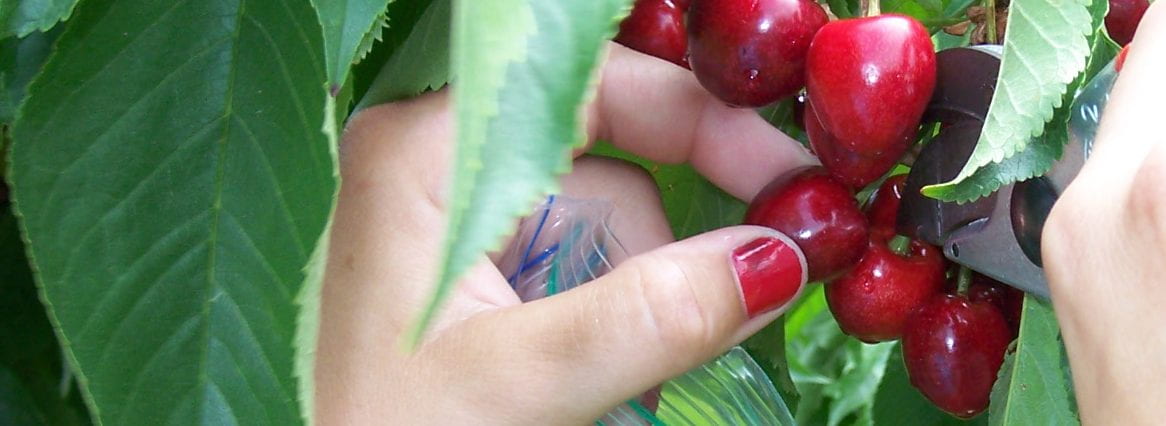32 SWD were caught in four traps set on the edge of and within a tart cherry orchard in Columbia County. Fruit is ripe in the orchard. These traps, checked on July 1, 2019, are being monitored by Natasha Field, Cornell Cooperative Extension Eastern NY Commercial Horticulture Program.

Numbers caught in traps, especially in Eastern NY, are climbing, with totals in the double and triple digits. Typically, we don’t see numbers climb up this rapidly in the SWD trap monitoring network. Fruit that is ripe is at risk of infestation. Consult Cornell Fruit Resources SWD Management, fruit.cornell.edu/spottedwing/management/.
Things to consider regarding insecticide programs for SWD, with specific emphasis on materials registered for cherries:
- Population growth models for SWD theoretically calculate that using the most efficacious insecticide first will more successfully lower SWD numbers by knocking the population back to close to zero and delaying population growth. (This is strikingly similar to classic tactics in plant disease epidemiology – think knocking back primary apple scab infections.)
- Insecticides with probable excellent efficacy include – Exirel (3 days), Minecto Pro (21 days), Danitol 2.4EC (3 days), Mustang Maxx (14 days), and Imidan 70W (7 days). Of these, choose first those with the longest pre-harvest interval (given in parentheses) that you can accommodate; some may be out of the question at this point. (Remember – Imidan can’t be used on sweet cherry.) Rotate to other insecticides with shorter pre-harvest interval for later in the season, closer to harvest.
- Research on berries has shown Mustang Maxx isn’t very rain fast, so plan to re-cover if significant rain occurs during the spray interval.
- Rotate use among insecticides with different IRAC groups to reduce selection pressure for resistant populations of SWD. (In a Finger Lakes vineyard last year, insecticide-resistant Drosophila melanogaster (SWD = D. suzukii) were identified. D. melanogaster is targeted with insecticide for controlling sour rot in grapes.)
- For the second insecticide application, switch to a product with Good to Excellent or Moderate efficacy – Entrust 80WP (7 days), Entrust 2SC (7 days), Delegate (7 days), Asana XL (14 days), Lambda-Cy EC (14 days).
- The spray interval column in the Insecticide Quick Reference Guide table relates to use of the same product back-to-back. When switching to another mode of action, weekly applications are OK and are suggested against SWD.
- Don’t stretch intervals between sprays more than about seven days.
- Make sure you are getting excellent coverage. Spray every row (no alternate row spraying.)
Review the Quick Guide to SWD Insecticides at
www.hort.cornell.edu/fruit/pdfs/swd/berry-insecticides.pdf for berries
www.hort.cornell.edu/fruit/pdfs/swd/treefruit-grape-insecticides.pdf for stone fruit and grapes

